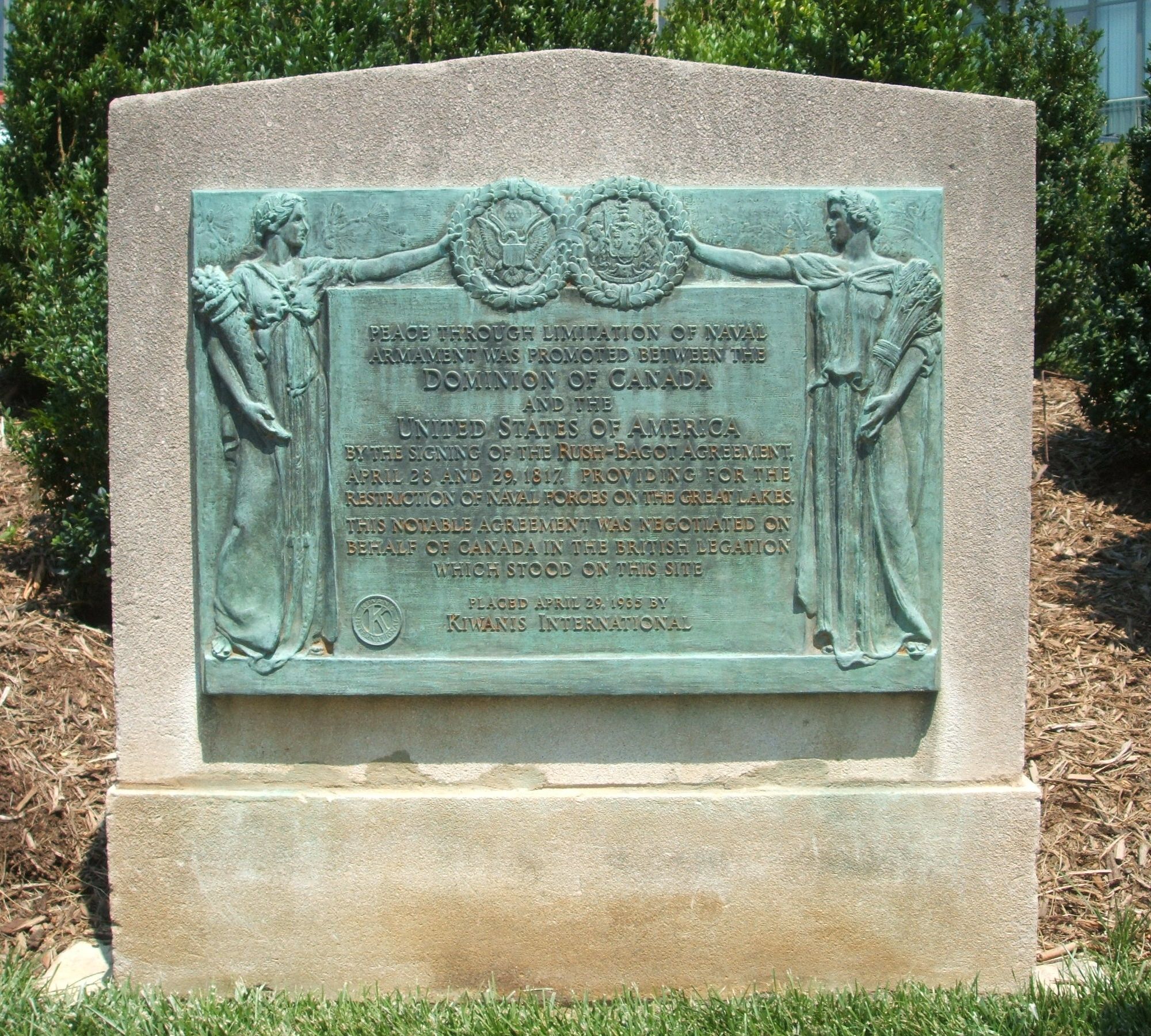The Rush-Bagot Agreement (or Rush-Bagot Treaty) was signed in 1817 by Acting Secretary of State Richard Rush and Sir Charles Bagot, British minister in Washington. The treaty reduced the number of military ships on the Great Lakes and Lake Champlain and helped secure the Canadian-American border.
Background
The Treaty of Ghent brought an end to the War of 1812, but tensions between Britain and the United States remained high. US Secretary of State James Monroe proposed to British Foreign Secretary Lord Castlereagh in 1816 that the two countries should agree to limit naval armaments. He suggested a limit of one ship each, on Lake Ontario and Lake Champlain, and two each on the Upper Lakes. (See Great Lakes.)
In 1817, the Rush-Bagot Agreement (or Rush-Bagot Treaty) was negotiated and finalized between Acting Secretary of State Richard Rush and Sir Charles Bagot, British minister in Washington.
Significance
Since naval disarmament of the lakes was virtually complete after 1817, the Rush-Bagot Agreement is considered to have ended the British-US naval race and is frequently cited as the diplomatic origin of the friendly international border. In fact, only naval power on the lakes was affected, for the US and Britain continued to build land fortifications along the border for the next half century.

 Share on Facebook
Share on Facebook Share on X
Share on X Share by Email
Share by Email Share on Google Classroom
Share on Google Classroom















